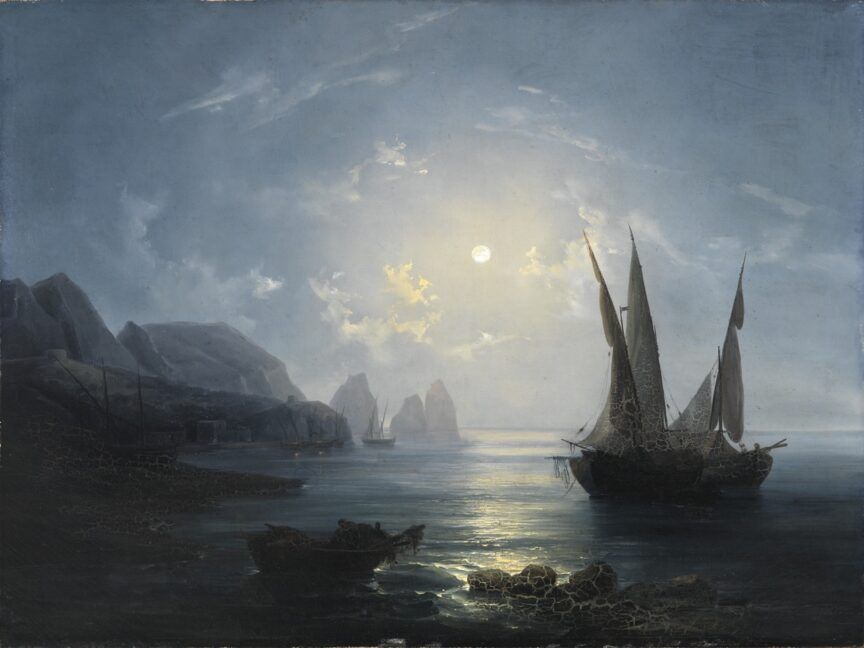Salvatore Fergola, pittore e reporter.
Salvatore Fergola (Napoli 1796 – 1874), straordinario protagonista, della pittura a Napoli negli importanti anni della Restaurazione. Ultimo pittore di corte, possiamo considerarlo un vero e proprio un reporter d’eccezione della Napoli della prima metà dell’Ottocento, anni importanti durante i quali il capoluogo campano era il centro urbano più vivace e popoloso d’Italia; una metropoli pulsante ed all’avanguardia in Europa. Città adorata dai viaggiatori provenienti da tutto il mondo, ed anche da due immensi geni che vi lasciarono impressa la loro impronta: Giacomo Leopardi e Gioacchino Rossini. Salvatore Fergola dipinse la vita quotidiana e la ricchezza di Napoli, gli eventi, le cacce, i tornei. Fu l’interprete della vocazione alla modernità, rappresentando, in quadri meravigliosi, la nascita della prima ferrovia italiana, il varo del primo battello a vapore e la costruzione dei primi ponti in ferro. Un artista che ci piace definire “on the road”, incredibilmente versatile, attraverso opere rappresentanti vedute, scene di naufragio, temi biblici. Pittore che seppe esplorare anche i territori del sentimento, partencipando attivamente alla rivoluzione romantica.
Salvatore Fergola, painter and reporter.
Salvatore Fergola (Naples 1796 – 1874), extraordinary protagonist, of painting in Naples in the important years of the Restoration. The last court painter, we can consider him a real reporter from Naples in the first half of the nineteenth century, important years during which the capital of Campania was the most lively and populous urban center of Italy; a pulsating and avant-garde metropolis in Europe. City adored by travelers from all over the world, and also by two immense geniuses who left their mark on them: Giacomo Leopardi and Gioacchino Rossini. Salvatore Fergola painted the daily life and wealth of Naples, the hunts, the tournaments. He was the interpreter of the vocation to modernity, representing, in wonderful paintings, the birth of the first Italian railway, the launch of the first steamboat and the construction of the first iron bridges. An artist that we like to call “on the road”, incredibly versatile, through works representing views, shipwreck scenes, biblical themes. Painter who also knew how to explore the territories of feeling, actively participating in the romantic revolution.

